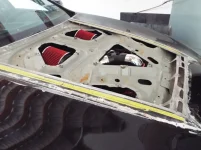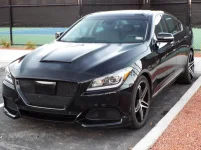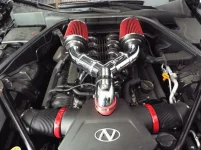ZZR
Getting familiar with the group...
- Joined
- Jan 2, 2015
- Messages
- 64
- Reaction score
- 0
- Points
- 0
As part of our Aero package
http://genesisowners.com/hyundai-genesis-forum/showthread.php?t=15153
Cold Air Intake is an effort to offer options to 2015 Genesis owners.
And just as with the whole package CAI is work in progress.
So far we have found the workable configuration for the filters and pipes.
The stock filter boxes are intact, our CAI is an addition to them.
Pic 1 shows where the inlets are going to be. It was important not to desturb the hood's frame, so the openings are there already, under the sheetmetal.
Pic 2The openings will be covered by a hood scoop and air drawn from the front of it.
Pics 3 and 4 show the routing of the pipes. CAI pipes cut into the stock system
right in front of the TB.
The last step will be to develope a pan and isolate filters from the hot engine bay air.
http://genesisowners.com/hyundai-genesis-forum/showthread.php?t=15153
Cold Air Intake is an effort to offer options to 2015 Genesis owners.
And just as with the whole package CAI is work in progress.
So far we have found the workable configuration for the filters and pipes.
The stock filter boxes are intact, our CAI is an addition to them.
Pic 1 shows where the inlets are going to be. It was important not to desturb the hood's frame, so the openings are there already, under the sheetmetal.
Pic 2The openings will be covered by a hood scoop and air drawn from the front of it.
Pics 3 and 4 show the routing of the pipes. CAI pipes cut into the stock system
right in front of the TB.
The last step will be to develope a pan and isolate filters from the hot engine bay air.













